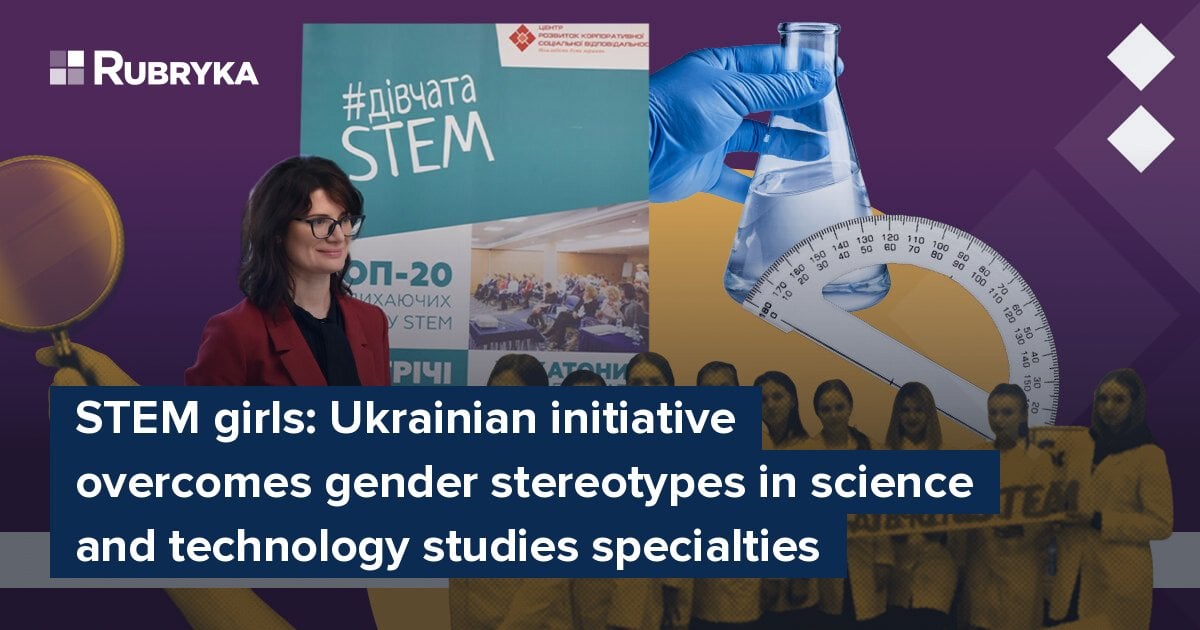
What is the problem?
Exact sciences, technologies, and engineering are known as exclusively male affairs. You have probably heard this gender bias more than once. Stereotypes tell us that women should master other professions. A female accountant, a female doctor, a female teacher, a female beauty specialist — such models are still stable and acceptable for most Ukrainians.
Three years ago, the UN Recovery and Peacebuilding Programme interviewed students of schools and vocational education institutions. It turned out that 60% of the surveyed young people believed there is a division of professions based on gender. Moreover, the same number of young respondents noted that the primary purpose of women is to give birth and take care of children.
Under such conditions, one must have considerable courage and self-confidence to resist gender stereotypes and realize oneself in professions considered masculine.
What is the solution?
Girls STEM is a Ukrainian initiative aimed at overcoming gender stereotypes when choosing a profession and increasing the number of girls in STEM fields — Science, Technology, Engineering, and Mathematics. The community joins girls and women from all over Ukraine who are united by a passion for science and helps them believe in their strength.
How does it work?
Trapped by stereotypes
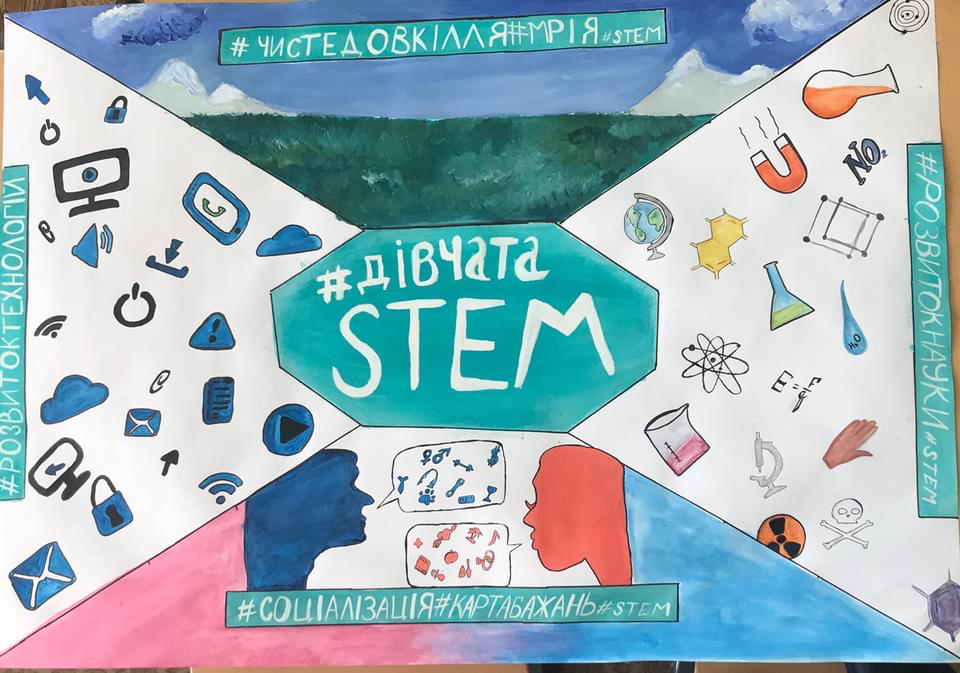
Desire Map was created by the participants of the Girls STEM project
The demand for STEM specialists is increasing every year. However, despite the obvious attractiveness of STEM fields, girls still do not actively choose their future profession in STEM.
There are also significantly fewer women in science worldwide and in Ukraine, than men. According to UN statistics, only 33% of people engaged in scientific activities are women. Women remain a minority in digital information technology, computing, physics, mathematics, and engineering. For example, according to the DOU, the biggest IT community in Ukraine, in 2023, only 28% of individual entrepreneurs in IT were registered by women, and it is not only a matter of the glass ceiling effect — the resistance to the efforts of women and minorities to reach the top ranks of management in major corporations. Research shows that as early as elementary school, children begin to express opinions that girls are less interested in science, technology, engineering, and math.
"Girls are less likely to choose classes with this profile if they are told that boys like this topic more," says Maryna Saprykina, the founder of the Girls STEM initiative and the head of the Development of Corporate Social Responsibility Center. "Conversely, the number of willing girls increases when it is reported that there is a general interest in this topic. Therefore, it is important to work with stereotypes since school. After all, it affects the choice of a profession in adult life."
An initiative for the able and impartial
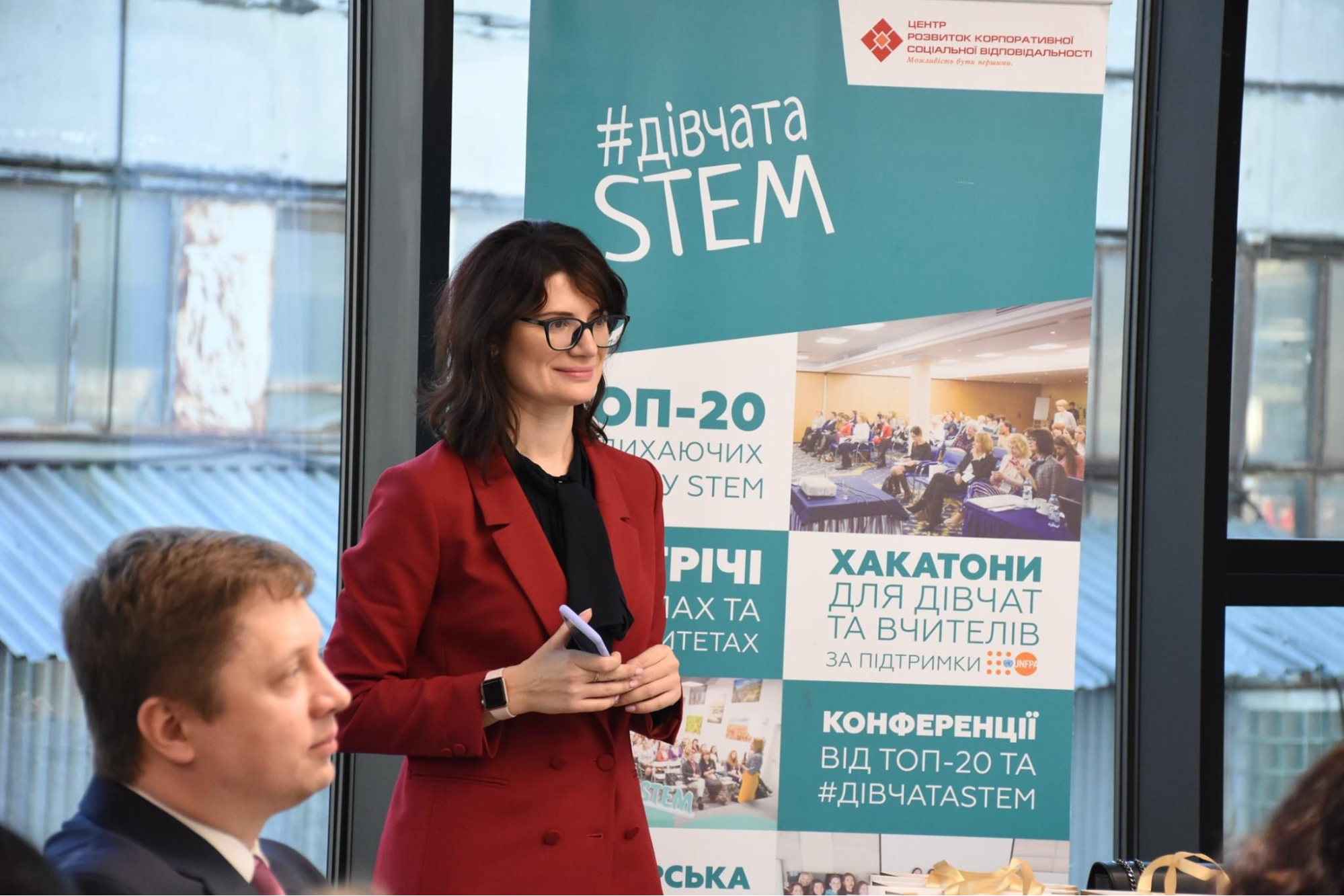
Maryna Saprykina, the founder of the Girls STEM initiative
The Girls STEM initiative was founded by the CSR Development Center back in 2016. Its goal is to help girls overcome societal pressures and realize themselves in STEM. The initiative's activities unite middle and high school students and students of vocational and technical schools.
Community tasks are:
- to help attract talented girls to STEM and develop in STEM professions;
- to eradicate gender stereotypes about girls in STEM;
- to improve interaction between girls from different educational institutions and specialties who are interested in STEM fields;
- to implement STEM approaches in educational institutions in Ukraine;
- to raise awareness of STEM as a leading approach to education in Ukraine.
The initiative works in several directions
There is a mentoring program where the initiative connects girls with women already successful in STEM professions. Together, they prepare a particular STEM project that has social significance, and the program participant implements the project with the support of a mentorThis is an incredible program. It gives such synergy, and the result can be measured by the presentations of implemented projects and the number of inspired reviews. We have already graduated about 100 girls, and most of them have chosen their direction in STEM," Saprykina shared with Rubryka.
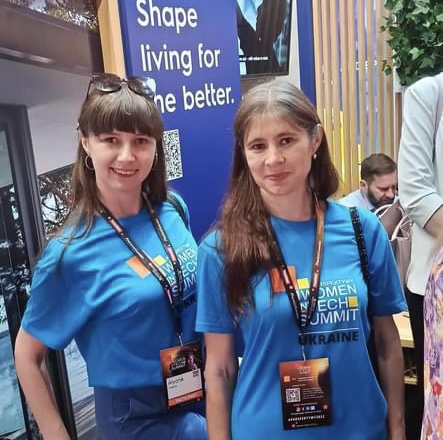
STEM girls participated in the Perspektywy Women in Tech Summit in Poland
The community also hosts National Girls in Technology Day every year. Companies that work in the field of STEM invite girls on excursions and spend a working day together. As the experience of the initiative shows, this is a significant event because it allows communication with women who work directly in the field.
Hackathons 'How to involve girls in STEM' for female students are regularly held — teams develop projects with this theme, and the winning team implements its idea: shoots commercials and creates games.
In addition, the initiative developed maps of professions in many fields and recorded two video courses about careers in energy and agriculture.
"We are also trying to bring a gender-sensitive approach to education and science. For this, we have such projects as the competition for the best gender-sensitive STEM lesson and the L'Oreal-UNESCO Award For Women in Science," Saprykina adds.
Another important task of the initiative is to increase the faith of girls and women in the possibility of building a career in the STEM field. After all, one of the most common stereotypes is that boys are more capable of studying STEM disciplines and that it is difficult for women to build a career in STEM.

Participants of the Girls STEM project meet with Ukrainian scientists
"To change such prejudices, we introduce girls during various events to many women who have a significant positive experience of self-realization in the STEM field. We are convinced this kind of live communication is precious and effective in disproving many girls' fears. Girls need to believe in their own abilities and see successful role models," the founder of the initiative is confident.

Girls STEM at a branch of the Prykarpattia National University named after Vasyl Stefanyk
The most important thing at Girls STEM is a systematic approach and working with branches. From the very beginning of its existence, the initiative began inviting schools and higher education institutions to form Girls STEM branches, which would unite girls interested in STEM subjects and professions. By February 24, 2022, the initiative had more than 100 branches across the country, in which more than 10,000 girls were involved in the STEM movement during the entire existence of the initiative.
Saprykina tells the story of the New Energy branch of the initiative in Ivano-Frankivsk: "At the beginning of their work with us, 16% of the participants in their STEM classes were girls. After joining us, they began to use gender-sensitive communication and pay attention to the invitation of boys and girls in the announcements. Currently, the number of girls who join the classes is equal to 22%.
Girls STEM and war
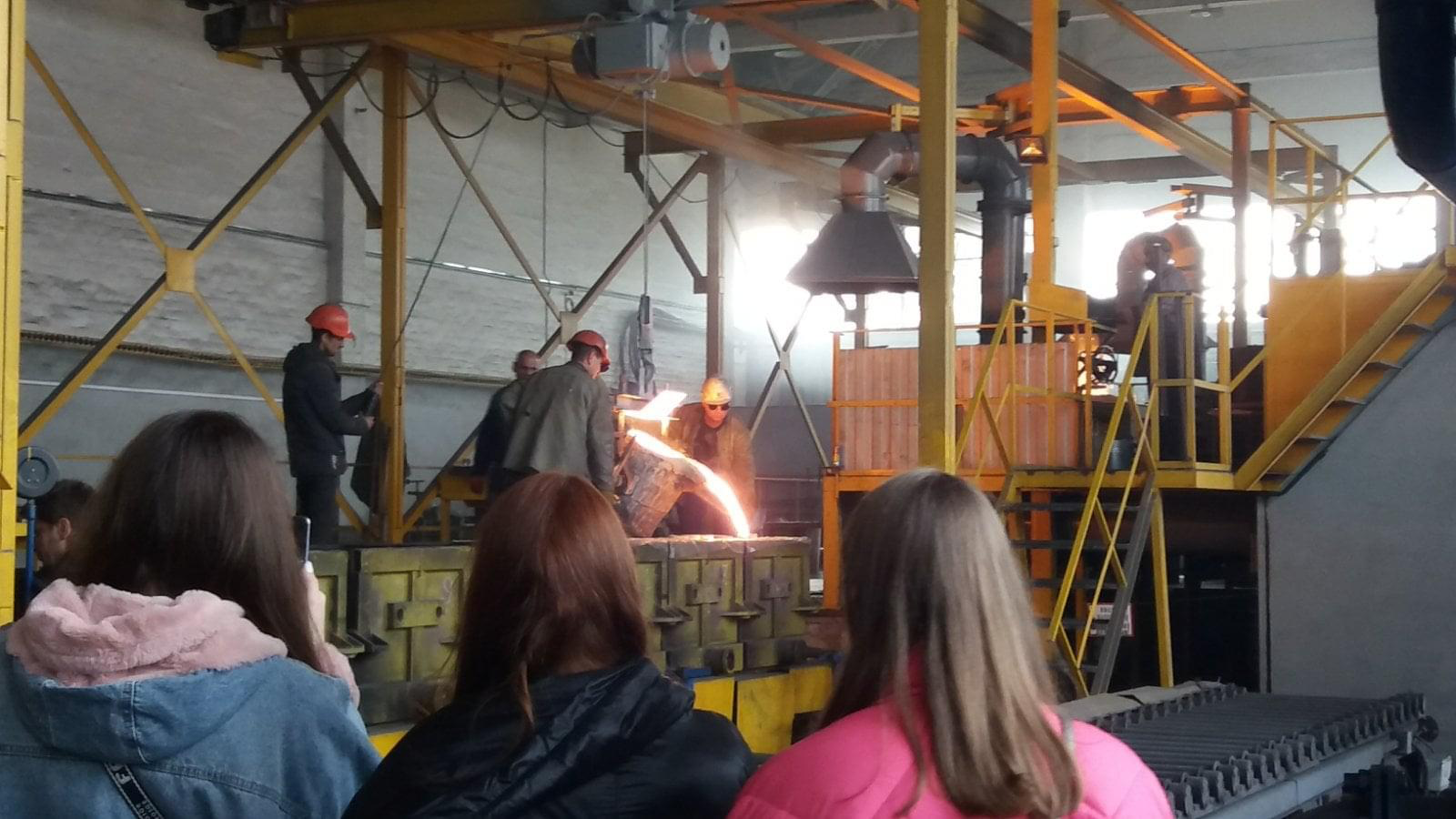
Girls from Melitopol Gymnasium No. 8 (Zaporizhia) visit the Turbocom plant, 2021. Now Melitopol is captured by the Russian invaders
With the beginning of the full-scale invasion of the Russian Federation, many branches were forced to close, some educational institutions were destroyed, and some were relocated or switched to a distance learning format — currently, there are 57 branches in Girls STEM.
"Since the beginning [of the war — ed.] until the occupation, we still tried to work at least remotely, to the sounds of explosions, but then the Russians came. The school was almost completely destroyed. Fortunately, the children were no longer inside. Almost all of them fled for their lives with their families. After the liberation, as soon as the connection was restored, the STEM girls who survived the occupation asked us: 'When are we going to resume STEM activities?'" — such a letter was received by the founder of the initiative from the occupied and then liberated Kherson region from the Girls STEM branch.
"As part of our programs last year and this year, we supported schools and teachers, helped with equipment, transferred important things from the material and technical base," says Saprykina. "However, we are already working on increasing the number of branches, including opening branches abroad."
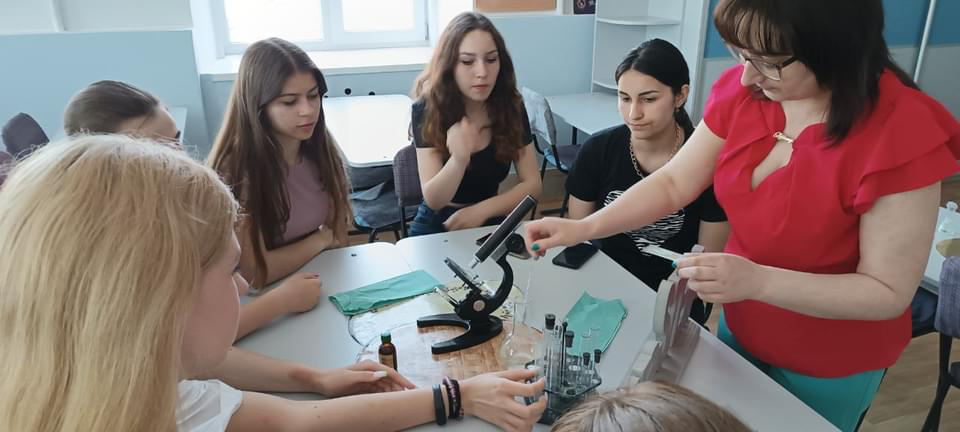
Girls STEM, the branch of Romenska Secondary School No. 11 in the Sumy region
However, despite all the difficulties and problems, the surviving branches continue their work even during the war. For example, the Girls STEM Romenska secondary school branch participants, celebrating this year's Science Day, learned to make microscopic preparations and got acquainted with the structure of cells, conducted geographical research with the help of tellurium, a model of the starry sky and a model of the earth.
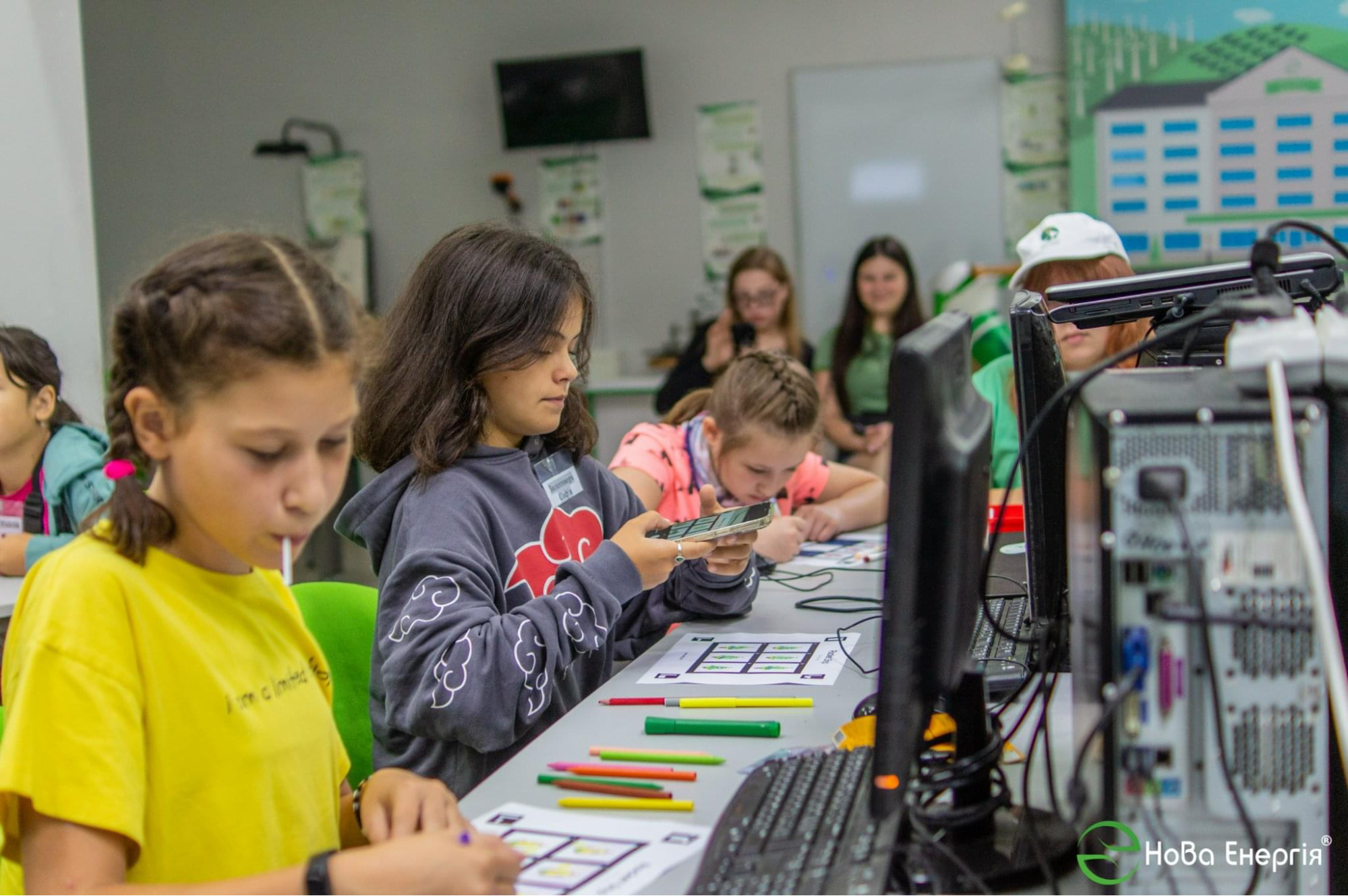
Girls at the summer science camp Girl STEM Camp-2022, Ivano-Frankivsk
In the scientific town New Energy in Ivano-Frankivsk, schoolgirls are engaged in science even during the holidays. In the summer of 2022, the Girls STEM initiative and the CSR Development Center implemented the Girl STEM Camp in the Ivano-Frankivsk branch — a free summer camp in which 15 girls, eight of whom are IDPs, had the opportunity to make sure that science and technology are interesting and exciting. In two weeks, the girls had time to participate in 24 master classes, two excursions to successful enterprises of the city working in the STEM direction, grow crystals and microgreens, learn financial literacy, leadership skills, and much more.
Did they really succeed?
Girls can do everything, and even more
The head of the CSR Development Center notes that the feedback collected by the initiative clearly demonstrates how girls' views on certain issues change before and after the event — interest in STEM always increases many times over.

Winners of the 2023 Education in a Smartphone competition for girls
"It is precious for us when girls tell us that they find many like-minded people thanks to the activities of Girls STEM, receive great inspiration from communication with women in STEM and motivation to follow their STEM passions and in the future choose a profession close to their hearts," says Saprykina. "For example, we recently held the Education in a Smartphone competition for girls, and the authors of the best works were invited to Kyiv. They learned about the work of Infopulse and IT-Integrator — the best IT companies in Ukraine. Will they want to choose a career in STEM after this experience? We hope so!"
The hopes of the organizers of the initiative are not in vain, and this is proved by the reviews of the girls who, thanks to familiarity with the initiative, are already getting an education in technical specialties.

Anastasia Saksa is a student of the State Tax University in Irpin, majoring in Computer Science.
"Before, I would never have dared to enter a specialty related to IT, but thanks to the initiative Girls STEM, I met many girls who shared their experience in computer technologies, and I decided to adopt their experience. It really inspired me, and I dared to enter this specialty, and I definitely did not lose. The specialty turned out to be easy to master — I receive an increased scholarship and get straight A's. From my experience, I can advise you not to hesitate but to act if you are really interested in studying the field of IT," says Anastasia Saksa, who is currently studying Computer Science at the university.
Valeriia Levchenko is a student of the Lviv National University named after Ivan Franko, and majors in Electronics.
"I found out about Girls STEM at school, and I joined because I favored any adventure. I used to want to be a designer, but this project changed my life. I learned about programming, and that's how my path in the technical field began. I became more interested in this and eventually found myself in electronics engineering. I'm studying and understand that this field is mine," Valeriia Levchenko tells her story.
Even more useful solutions!
Girls STEM is about the future
"For me personally, this project is about a dream," says Saprykina. "In my youth, I wanted to choose a STEM specialty, but the choice was made differently. Therefore, for me, the Girls STEM initiative is about realizing the dream so that every girl considering the choice of a profession receives a wide variety of information on time, allowing her to make an informed choice without relying on stereotypes."
The founder of the Girls STEM initiative notes that this project is not only about increasing the opportunity for boys and girls to equally realize their vocation to STEM and receive quality STEM education. It is about the future of post-war Ukraine.
According to the research of the expert platform of the Center Development of CSR Career Hub Professions in a restored country, ten priority industries were identified on the labor market in the post-war period: security and defense industry, medical services and health care, construction, architecture and infrastructure, agro-industry and agriculture, IT and digital technologies, energy, social services and psychological support, retail, transport, and logistics, education, and science. As you can see, there are a lot of professions, specifically in STEM, so we can definitely talk about the importance of STEM for the future of Ukraine and girls in this direction.
Information about promising industries and professions, as well as about educational institutions of Ukraine for obtaining a relevant education, can be found in the guide 'What to study after school.' The guide was prepared based on the results of the research of the Career Hub platform and the Institute of Educational Analytics.


